
In this lesson, students will continue to upload their chapters and artifacts, reviewing and editing their work and troubleshooting any problems that arise.
- Subject:
- English Language Arts
- Material Type:
- Lesson Plan
- Date Added:
- 09/21/2015

In this lesson, students will continue to upload their chapters and artifacts, reviewing and editing their work and troubleshooting any problems that arise.
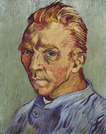
What kinds of changes—internal and external—are in literary self-portraits? Students will explore the types of changes portrayed in fiction. They’ll examine literary techniques writers use to portray self-portraits and change, and consider which techniques they find most useful.
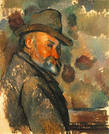
For each of the five lenses, students will think of changes they’ve undergone and character strengths they’ve shown. Are there specific examples that they’d like to include in their self-portrait? They’ll start planning their chapters and the types of media they can use to express them.

In this lesson, students will take the third in a series of three Cold Write assessments in the narrative genre. The Benchmark Assessment (Cold Write) is an unassisted and unrevised piece of writing with the purpose of providing a quick gauge of the student’s mastery of the characteristics of a given genre. Today’s Benchmark Assessment (Cold Write) measures and provides a benchmark of students’ mastery of narrative writing. Then, they’ll consider the choices artists make when deciding how to portray someone. They’ll also do web research to explore different types of self-portraits.

What is an artist’s responsibility to truth? What is the role of truth and facts in poetry, nonfiction, and fiction? Students will explore these questions as they consider the truths they want to convey in their self-portraits. They’ll also start interviewing people who know them well.

What are your students’ strongest personal character strengths at this point in their lives? As students mine the interviews they conducted, they’ll look for character strengths others see in them. Do they see these strengths in themselves? Are they qualities that your students want to portray in their self-portrait?
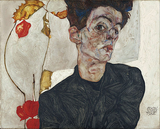
How is this time in your students’ lives a moment of change? Students will work with a partner to reflect on changes they’ve experienced, people and places that are important to them, and key decisions that they’ve made. They’ll then write a summary of what they learned about their partner.
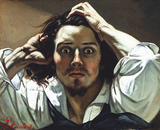
Why is adolescence a moment of change? How do teenagers experience change in themselves and their surroundings? Students will explore viewing change through five lenses: community, persons, body, events, and choices. Then they’ll look at website-creation or portfolio platforms they can use to publish their projects.

Students will consider the different ways that humor can be used by a writer to criticize people, practices, and institutions that he or she thinks are in need of serious reform. Students will read satirists ranging from classical Rome to modern day to examine how wit can be used to make important points about culture.
ACCOMPLISHMENTS
Students research an aspect of modern life that they would like to lampoon.
Students read from satirists across history to absorb the style and forms of humor and institutions satirized.
Students write their own satire, drawing on techniques of famous satirists to criticize their targets.
GUIDING QUESTIONS
These questions are a guide to stimulate thinking, discussion, and writing on the themes and ideas in the unit. For complete and thoughtful answers and for meaningful discussions, students must use evidence based on careful reading of the texts.
What is satire, and when is it too harsh?
How can humor and irony make you more persuasive?
What do you think is funny? How far would you go to satirize it?
Who gets more reaction—satirists or protestors?
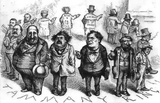
In this lesson, students will look at a classic satire that makes fun of and critiques various aspects of politics and government. Students will think, Why would satire have been a particularly popular way to voice criticism, especially when rulers were kings or emperors?
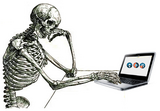
In this lesson, students will continue to enjoy examining an age-old target of satire. Students also start to plan a class presentation.
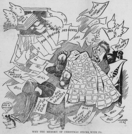
In this lesson, students begin a project that lets them enjoy satire that targets a specific topic or group. Students will be reading and viewing satires that span centuries, and identifying the satirical strategies used in the different works.
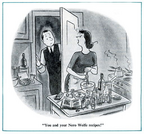
In this lesson, students will give their presentation to the whole class. Students will also listen to one another’s presentations and take notes. Finally, students will draw some conclusions about all the presentations they heard.
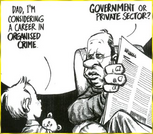
In this lesson, students work in small groups to share their information about an aspect of Jonathan Swift’s political satire. Once students are an “expert” on their topic, they will meet with others who are experts on different aspects of the satire. Students will teach each other.
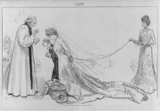
In this lesson, students will consider what makes the examples they and their classmates found satirical.
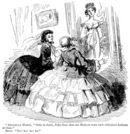
In this lesson, students continue to prepare their presentations for the next lesson. You can assign what’s left to do for homework.

In this lesson, students will begin to study Swift’s famous essay “A Modest Proposal,” and answer the question, what is Swift really arguing?
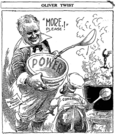
In this lesson, students will watch part of a film or television show that uses high school stereotypes, and they’ll analyze various cinematic elements that fuel its satirical power.
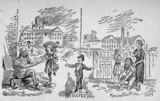
In this lesson, students will look at how a writer discusses poverty. Everyone knows poverty is devastating, but how can a writer most effectively create a response from his or her audience so people want to take action? And what kinds of evidence are most persuasive?
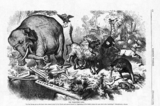
In this lesson, students will define satire and look at examples of it in modern media. What makes it satire? Did students know that it was criticizing society when they saw it? What makes people like satire so much?